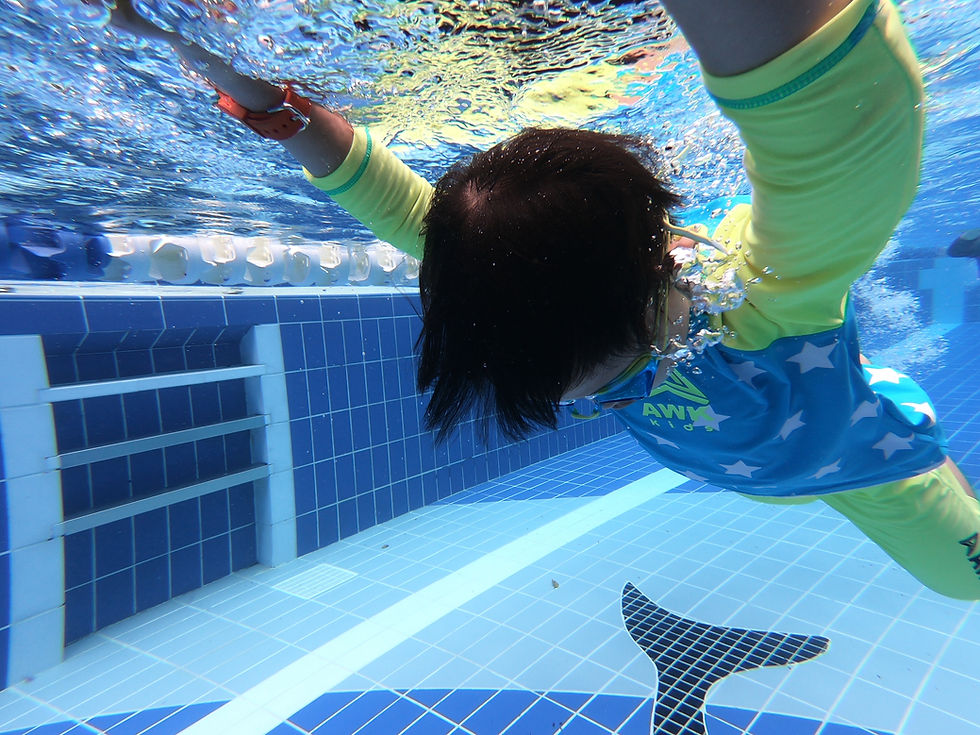Front Crawl Techniques for Different Pool Sizes
- SG Sink Or Swim

- 2 days ago
- 4 min read

Adapting Your Stroke, Strategy, and Mindset for Short Course, Long Course, and Everything In Between
Whether you’re slicing through a 25-yard indoor pool, racing in a 50-meter Olympic basin, or training in a compact 20-meter hotel pool, front crawl (freestyle) isn’t one-size-fits-all. Pool size dramatically impacts your stroke rhythm, turn frequency, pacing strategy, and even breathing pattern.
Yet many swimmers use the same technique regardless of environment — leaving speed, efficiency, and confidence on the table. The truth? Elite swimmers adapt. They tweak their stroke for the space they’re in.
In this guide, we’ll break down how to optimize your front crawl for three common pool sizes — and how to train smart when your only option is a short or non-standard pool.
🏊♀️ Why Pool Size Changes Everything
Short Course Yards (SCY) | 25 yards (22.9m) | ~8.7 turns | Wall speed, breakout power, rhythm |
Short Course Meters (SCM) | 25 meters | 8 turns | Similar to SCY, slightly longer glide |
Long Course Meters (LCM) | 50 meters | 4 turns | Stroke endurance, pacing, open-water-like rhythm |
💡 Fun Fact: In SCY, you spend up to 30% of a 100m race underwater — making turns critical. In LCM, it’s closer to 15% — making stroke efficiency king.
🦶 1. Short Course Yards (25-Yard Pools)
Common in: U.S. high schools, colleges, YMCAs
✅ Technique Adjustments:
Faster stroke rate: More turns = less time to glide
Explosive breakouts: Maximize 10–15m underwater phase off every wall
Tighter streamline: Every inch counts in short glides
Breathe later in stroke cycle: Avoid disrupting breakout rhythm
🔁 Turn Focus:
Flip turns must be lightning-fast — no coasting into the wall
Streamline like a missile — biceps squeezing ears, core braced
5 powerful dolphin kicks before surfacing
🏋️ Training Tips:
Practice turn + 3-stroke sprints to build breakout speed
Use Tempo Trainer to maintain stroke rate through turns
Count underwater distance — aim for 10–12 yards off each wall
🎯 Cue: “Turn fast. Kick hard. Stroke strong.”
🌍 2. Long Course Meters (50-Meter Pools)
Common in: Olympics, international competitions, summer leagues
✅ Technique Adjustments:
Smoother, longer stroke: Emphasize distance per stroke (DPS)
Consistent pacing: No “rest” on walls — maintain rhythm
Bilateral breathing: Better for open-water transfer and balance
Relaxed recovery: Conserve energy over longer stretches
🔁 Turn Focus:
Precision over speed: One bad turn costs more in LCM
Strong push-off, but slightly longer glide phase
Sight the T — no lane lines in open water; train without them
🏋️ Training Tips:
Swim continuous 100s/200s to build pacing discipline
Practice blind swimming (no lane lines) to simulate open water
Use race-pace sets with minimal rest to mimic competition fatigue
🎯 Cue: “Glide long. Breathe easy. Stay smooth.”
🏨 3. Small or Non-Standard Pools (20m, 15m, Hotel Pools)
Common in: Apartments, resorts, rural facilities, home pools
✅ Technique Adjustments:
Ultra-high stroke rate: Constant turning disrupts rhythm
Minimal glide: Focus on continuous propulsion
Compact turns: Open turns may be safer than flips in tight spaces
Head-up freestyle: Useful for navigating crowded or shallow water
🔁 Turn Focus:
Touch-and-go turns: No time for streamline — push immediately
Practice open turns if flip turns aren’t safe
Use walls for push-offs, even in training
🏋️ Training Tips:
Drill-focused sets: More time on technique than distance
E.g., 10 x 25m: 1 drill, 1 build, 1 race-pace
Use resistance tools: Parachutes, drag socks to build power in short spaces
Mental rehearsal: Visualize LCM/SCY racing to maintain race mindset
🎯 Cue: “Every wall is a reset. Every stroke is a chance.”
🔄 How to Train for One Pool Size While Stuck in Another
➤ Training in SCY but Racing LCM?
Add “LCM Simulation” sets:
4 x 50m with 15s rest (mimics fewer turns)
Swim with lane lines covered to practice straight swimming
Reduce turn volume: Do 200m continuous instead of 8 x 25m
➤ Training in LCM but Racing SCY?
Add “Wall Density” sets:
16 x 25m on 30s — focus on fast turns
Use Tempo Trainer to maintain stroke rate through frequent turns
Practice underwater dolphin kicks off every push-off
➤ Only Have a Small Pool?
Focus on quality over quantity:
5 x 25m perfect stroke > 10 x 25m sloppy
Use vertical kicking, treading, and water running to build fitness
Film your stroke — small pools make video analysis easier
📊 Stroke Rate & Breathing Adjustments by Pool Size
SCY | 85–95+ | Unilateral (every 2) — faster rhythm |
LCM | 75–85 | Bilateral (every 3) — balance & efficiency |
Small Pool | 90–100+ | Every stroke or every 2 — maintain oxygen |
💡 Use a Tempo Trainer to lock in the right cadence for your target environment.
“In a tiny pool? Make every turn count. Perfect practice beats perfect distance.”
Final Thoughts
Great freestylers don’t just swim fast — they adapt fast. They know that a stroke that flies in a 25-yard pool might flounder in a 50-meter basin, and vice versa. By tailoring your technique, pacing, and training to your environment, you turn every pool — no matter its size — into a launchpad for success.
So whether you’re flipping every 22 yards or gliding through Olympic blue, remember:
The water doesn’t care how long the pool is —it only cares how well you move through it.
Adapt. Flow. Conquer.
Because the best front crawl isn’t the fastest —it’s the one that fits the water you’re in. 💙🏊♂️





Comments